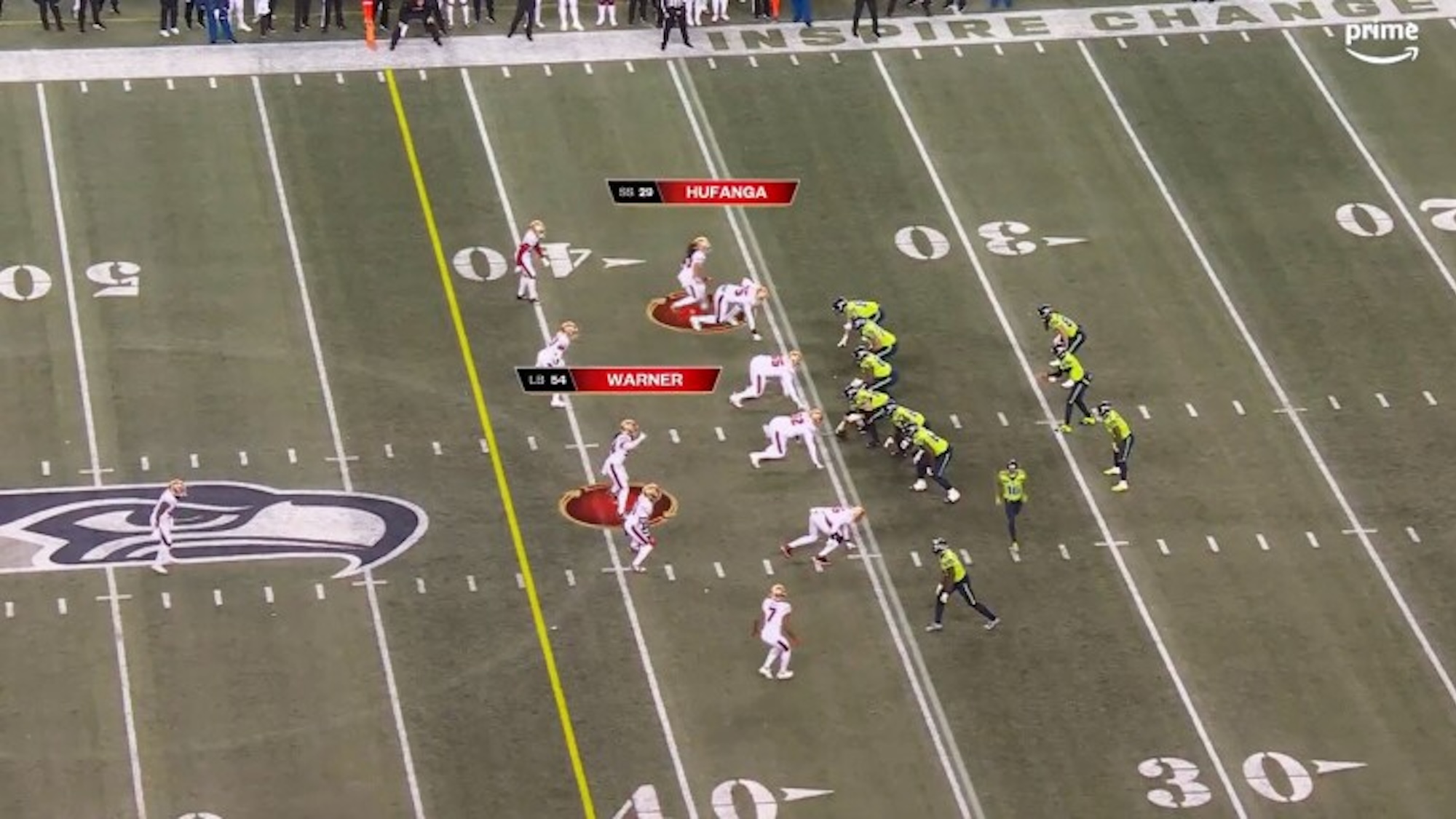

Amazon is investing substantial artificial intelligence computing power into its NFL Thursday Night Football broadcasts. According to a September 10 announcement, Tackle Probability is a new machine learning model that analyzes, interprets, and possibly predicts impending defensive blitzes against quarterbacks. Debuting during the Prime Video livestream of the Miami Dolphins vs. Buffalo Bills game on September 12, Tackle Probability’s results can be used by both real-time commentators, as well as provide “new ways of visualizing the action on the field.” As GeekWire explained on Tuesday, this will include on-screen highlighting of the defensive players most likely to attempt tackles.
“Until now, tackling statistics were limited to simple counts of solo and assisted tackles,” Amazon Web Services (AWS) said in a statement. “[The] new tackle probability model aims to capture the entire process of tackling, from pursuit angles to missed attempts, providing a wealth of deeper and more granular insights…”

Tackle Probability is the latest outcome from the NFL Big Data Bowl, an annual crowd-sourced competition intended to “make the game more exciting to fans” by developing new tools using analytics and tech. Amazon designed the system in less than six months by first training the AI on millions of data points from every NFL game between 2018 and 2022, then using last season’s games as a test set. While “traditional stats only tell part of the story” according to an AWS explainer video, Tackle Probability relies on massive amounts of player and team statistics to reach its near instantaneous predictions.
“We fully tested 15 different machine learning models on over a million data points in four months, and now we can run the model in a live setting where it’s going through hundreds of thousands of data points every second, millions per game,” Keegan Abdoo, Research Analytics Manager, NFL Next Gen Stats, said in a statement.
For example, AI can analyze within milliseconds all 11 on-field defensive players using 20 specifically identified factors like their career tackle yards saved, chase down attempts, and missed tackle yards lost. This produces over 20,000 data points for Tackle Probability to interpret near-instantaneously ahead of a 10-second-play. Its conclusions can then be shown via onscreen animations, interpreted by live broadcast commentators, and later utilized by teams during postgame reviews.
“Football is games within games, and it’s been tough to find stats that truly quantify tackling beyond just the outcome,” added Mike Band, Senior Manager of Research and Analytics, NFL Next Gen Stats. “It was a huge hole in our football stats toolbox and an area where we knew we needed more quantified metrics.”
Amazon vows that Tackle Probability’s “unprecedented insights” will result in “game-changing” strategies on the field. Usage examples from the company include NFL team coaches employing the stats to determine which players are the most consistent and accurate at tackling—something they are already doing. Broadcasters, meanwhile, can highlight broken or made tackles for audiences “in real time.” Which, again, is part of what makes live NFL game broadcasts “live.”
Still, Tackle Probability is just one component within a fleet of similar NFL partnerships dedicated to stats, calculating season schedules from “a quadrillion possible combinations,” generating new NFL Films and NFL Media content, and analyzing fan behavior. Another area of benefit is allegedly improving player safety and mitigating injuries—the Digital Athlete tool, for example, was “instrumental in informing recent rule changes” after simulating 10,000 seasons of football to identify the biggest physical concerns facing athletes during any given game.
[Related: ‘The world is not prepared.’ How AI energy thirst might tap into geothermal power.]
Amazon’s newest AI rollout comes during the second year in its 10-season, $100 million partnership deal with the NFL for broadcasting rights to Thursday Night Football through Prime Video. In July, Amazon entered into an agreement with the NBA that will see the Big Tech company dole out $1.8 billion annually to air 66 games each season for the next 11 years.
It’s a safe bet to assume similar AI analysis will arrive for Amazon’s basketball coverage in the near future.